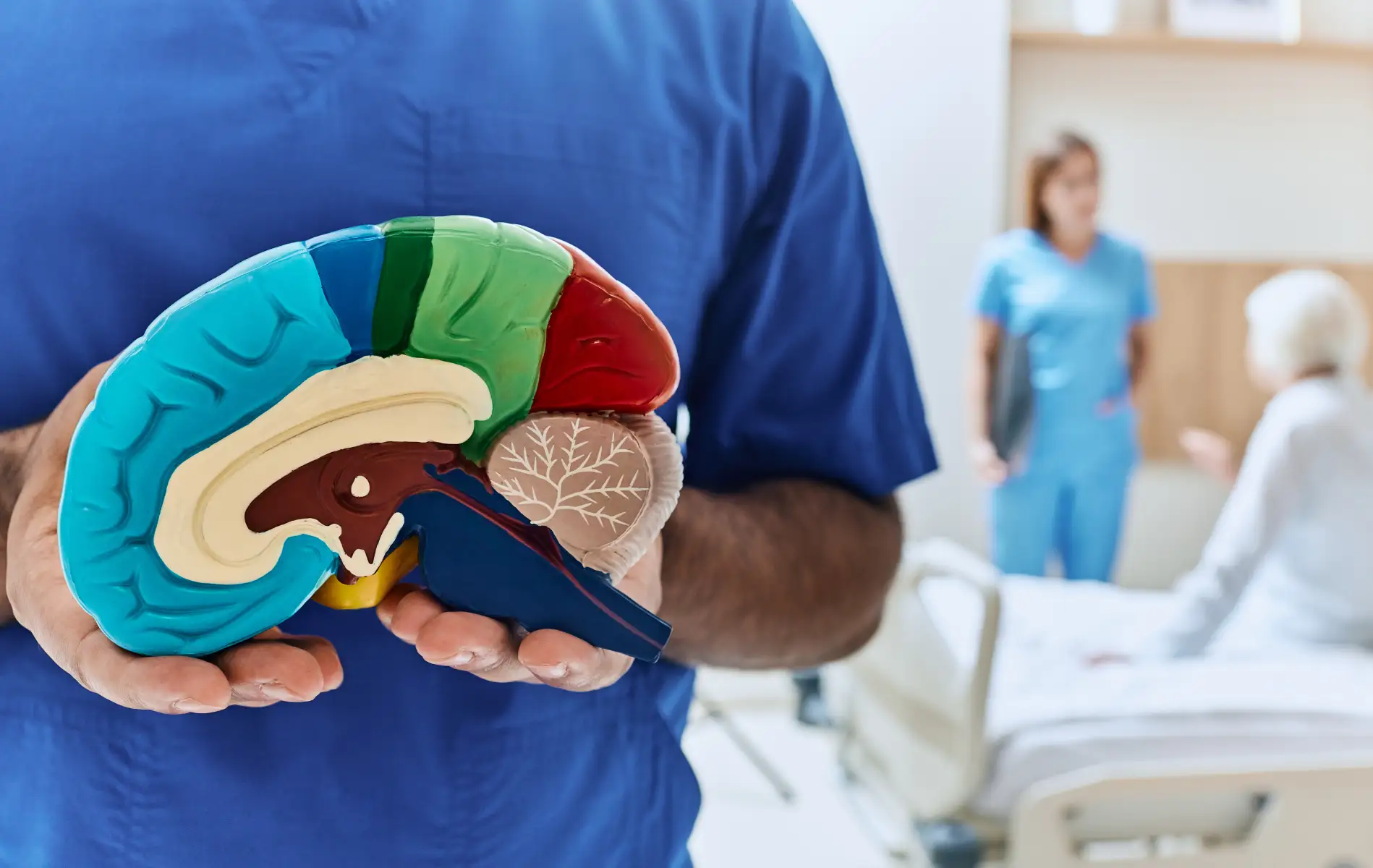Trauma is often thought of as a single, life-threatening event that leaves a profound impact on one’s emotional and mental well-being. However, trauma does not always occur as an isolated incident. For many individuals, trauma can result from repeated or prolonged exposure to distressing experiences, leading to what is known as complex trauma.
Unlike acute trauma, complex trauma stems not just from what happened but also from the relational context of the experience, often involving betrayal, dependency, or powerlessness. This article explores what complex trauma is, its deep and lasting effects, and how individuals can begin their journey towards healing.
What Is Complex Trauma?
Complex trauma arises from prolonged exposure to repeated traumatic events, often within contexts where the individual feels trapped or unable to escape. These experiences often occur during critical stages of development, such as childhood, when the brain and body are especially sensitive to adversity.
Common Causes of Complex Trauma
The following situations often give rise to complex trauma:
- Childhood abuse or neglect (emotional, physical, or sexual).
- Witnessing domestic violence.
- Prolonged bullying or harassment.
- Hostage situations or human trafficking.
- Living in dangerous or war-torn environments.
- Exploitation or betrayal by a caregiver.
Unlike a single traumatic incident, the repeated nature of these experiences forces individuals to exist in a continual state of hypervigilance, helplessness, or fear, making it difficult for the brain and body to regulate responses over time.
How Does Complex Trauma Differ from PTSD?
Complex trauma and Post-Traumatic Stress Disorder (PTSD) share similarities, particularly in their relationship to traumatic experiences. However, they are not the same. Complex trauma often results in broader and more pervasive changes in emotional regulation, self-identity, and interpersonal relationships.
Key Differences
- Type of Trauma:
- PTSD typically arises from a single-event trauma, such as a car accident or assault.
- Complex trauma results from long-term, sustained adversity.
- Impact on Identity:
- PTSD symptoms often centre around the traumatic event itself (e.g., flashbacks or nightmares).
- Complex trauma affects how a person views themselves, leading to feelings of worthlessness, self-doubt, or guilt.
- Impact on Relationships:
- PTSD may lead to distrust of the world in general.
- Complex trauma frequently causes attachment problems and difficulties forming healthy relationships, especially when the trauma was relational (e.g., abuse by a caregiver).
- Dissociation:
- Complex trauma survivors often experience dissociation—periods of disconnection from reality, their thoughts, or their physical sensations—more commonly and intensely than those with PTSD.
Emotional and Psychological Effects of Complex Trauma
Because complex trauma affects individuals so deeply and across many domains of life, its symptoms can appear in varied and chronic ways:
1. Emotional Dysregulation
Complex trauma survivors often struggle to manage emotions, particularly when faced with stress or reminders of past experiences. They may feel overwhelmed by emotions such as anger, sadness, or shame, or alternately experience emotional numbness.
2. Self-Perception and Identity Issues
Survivors of complex trauma often develop negative beliefs about themselves, shaped by ongoing interactions during the traumatic events:
- Persistent feelings of being “unworthy” or “damaged”.
- Self-blame, particularly if the trauma involved childhood abuse or neglect.
- A lack of a cohesive sense of self, leading to confusion about personal identity or values.
3. Interpersonal Challenges
Complex trauma often disrupts attachment and trust, making it difficult for survivors to form or maintain healthy relationships. Survivors may:
- Avoid closeness or intimacy for fear of betrayal.
- Become overly dependent on others for validation or support.
- Struggle to manage conflict or communicate effectively.
4. Dissociation
Dissociation is a common coping mechanism for those who have experienced complex trauma. Survivors may feel “detached” from their emotions, memories, or surroundings, as though they are observing themselves from a distance.
5. Chronic Shame
Survivors of complex trauma often carry a deep sense of shame, believing that they are inherently flawed or at fault for what happened. This belief can lead to self-criticism, hopelessness, or social withdrawal.
Physical Effects of Complex Trauma
Complex trauma does not merely affect the mind—it also changes the body. The chronic activation of the body’s stress systems often results in long-term health problems, including:
- Fatigue and chronic exhaustion.
- Digestive issues, such as irritable bowel syndrome (IBS).
- Headaches, migraines, or muscle tension.
- Weakened immune function, leading to more frequent illnesses.
- Increased risk of conditions like heart disease, diabetes, or chronic pain.
Trauma and the Developing Brain
When trauma occurs repeatedly during childhood, it disrupts the development of key areas in the brain responsible for regulating emotions, memory, and social interactions.
- Amygdala (Fear Response): Overactive, leading to hypervigilance and exaggerated fear responses.
- Hippocampus (Memory): Reduced size, causing difficulty distinguishing between past and present events.
- Prefrontal Cortex (Reasoning and Logic): Damage to this region makes it harder to manage emotions or think logically under stress.
The earlier the trauma begins—particularly when caregivers are the source of harm—the more profound the developmental effects may be.
How Is Complex Trauma Treated?
The effects of complex trauma can feel overwhelming, but effective treatment approaches are available. Recovery is possible with the right support and interventions.
1. Trauma-Focused Therapy
Working with a therapist who specialises in trauma is essential. Common therapeutic approaches include:
- Eye Movement Desensitisation and Reprocessing (EMDR): Helps individuals process and desensitise distressing memories.
- Somatic Therapy: Focuses on releasing physical tension and calming the body’s stress response.
- Dialectical Behavioural Therapy (DBT): Teaches emotion regulation and distress tolerance skills, which are particularly helpful for survivors experiencing intense emotions.
2. Building Safety and Stability
For complex trauma survivors, creating a safe and stable environment is a fundamental first step. Therapists may focus on providing grounding techniques, emotional self-regulation strategies, and ways to build secure relationships.
3. Holistic Approaches
Healing from complex trauma encompasses the whole person, addressing physical and emotional symptoms alike. Techniques such as trauma-informed yoga, mindfulness, and bodywork have been shown to reduce distress and promote resilience.
4. Long-Term Support
Unlike acute PTSD, complex trauma often requires long-term therapy to address its pervasive effects. Group therapy, peer support networks, or online trauma communities can help foster connection and understanding.
Healing Is a Journey
The effects of complex trauma run deep and may take time to process and heal, but recovery is entirely possible. Survivors should remember that their behaviours, thoughts, and feelings are understandable responses to the adversity they have faced. With professional support and self-compassion, it is possible to replace old patterns of survival with new ones rooted in safety, self-worth, and hope.
Ultimately, healing from complex trauma is less about erasing the past and more about building a future where survivors feel empowered, connected, and resilient.
Trauma in Childhood: Lifelong Impacts and Pathways to Recovery
Childhood is often regarded as a time of innocence, learning, and growth. However, for some children, early experiences are overshadowed by trauma, which can leave lasting emotional, psychological, and physical effects well into adulthood. Childhood trauma does not simply “fade over time” and can profoundly shape a person’s view of themselves, others, and the world.
This article explores the causes and impacts of childhood trauma and highlights the importance of early intervention and support in fostering healing and resilience.
What Is Childhood Trauma?
Childhood trauma refers to any distressing or overwhelming experience that disrupts a child’s sense of safety, stability, or well-being. Frequently, children lack the capacity to process these events fully, leaving them emotionally, mentally, and physically affected.
Common Causes of Childhood Trauma
Childhood trauma can result from a wide variety of situations, including:
- Physical, emotional, or sexual abuse.
- Neglect or abandonment.
- Witnessing domestic violence.
- Living with a parent or caregiver who struggles with addiction, mental illness, or imprisonment.
- Separation from a caregiver (e.g., through divorce, death, or foster care).
- Exposure to war, displacement, or natural disasters.
What makes childhood trauma especially harmful is that it often occurs during critical developmental years when the brain and body are still forming. Without intervention or support, the consequences can persist throughout a person’s life.
How Trauma Affects a Child’s Development
Children rely on their relationships with caregivers to feel safe and secure. When trauma occurs, especially in situations where a caregiver is the source of harm or unavailable to provide comfort, the child’s physical and emotional development can be disrupted.
1. Impact on the Brain
Early experiences shape how the brain develops, creating the foundations for future behaviour, emotional regulation, and learning. Trauma can alter this process by:
- Over-activating the amygdala, the brain’s fear centre, making children more sensitive to perceived threats.
- Impairing the growth of the prefrontal cortex, which governs self-regulation, decision-making, and impulse control.
- Reducing the size of the hippocampus, which affects memory and the ability to distinguish between past and present.
As a result, children who experience trauma may see the world as an unsafe and unpredictable place, creating hypervigilance and difficulty managing emotions or stress.
2. Physical Health Consequences
The stress of trauma prompts the body to remain in a state of constant alert, engaging the “fight, flight, or freeze” response. Over time, this can strain a child’s body and increase the risk of long-term health issues, such as:
- Chronic illnesses like heart disease, diabetes, or autoimmune disorders.
- Sleep disturbances and fatigue.
- Poor immune system functioning.
3. Emotional and Social Development
Trauma disrupts a child’s ability to form healthy attachments and self-esteem, often leading to:
- Fear of abandonment or difficulty trusting others.
- Challenges with emotional expression or regulation, often resulting in intense outbursts or emotional withdrawal.
- A tendency to blame themselves for what happened, creating a persistent sense of guilt or shame.
Signs of Childhood Trauma
Recognising the signs of childhood trauma is key to early intervention. Symptoms can vary based on the child’s age, personality, and the nature of the trauma. Common signs include:
In Young Children (Ages 0-6)
- Frequent crying or difficulty soothing.
- Developmental delays (e.g., in language, motor skills).
- Clinginess or extreme separation anxiety.
- Regressions in behaviour, such as bedwetting or thumb-sucking.
- Fear of new situations or adults.
In School-Age Children (Ages 7-12)
- Sudden drops in academic performance.
- Difficulty concentrating or paying attention.
- Aggressive or defiant behaviour.
- Feelings of shame, guilt, or low self-worth.
- Withdrawal from friends and family.
In Adolescents (Ages 13-18)
- Risky behaviours (e.g., substance use, unsafe relationships).
- Emotional numbness or apathy.
- Depression or anxiety, sometimes expressed through self-harm.
- Difficulty forming or maintaining friendships.
- Overreacting to minor slights or criticism.
Children may not always express trauma through words, so behavioural or emotional changes should be taken seriously and addressed with empathy and care.
The Lifelong Impact of Childhood Trauma
Without treatment, the effects of childhood trauma often persist into adulthood, shaping how individuals navigate their emotions, relationships, and life events. Common long-term impacts include:
1. Mental Health Concerns
Adults who experienced childhood trauma may struggle with:
- Depression, anxiety, or panic disorders.
- Post-Traumatic Stress Disorder (PTSD).
- Dissociation or emotionally “checking out.”
- Intense feelings of guilt, shame, or self-criticism.
2. Relationship Challenges
Trauma survivors may develop insecure attachment styles, leading to difficulties in forming healthy, trusting relationships. They may:
- Fear intimacy or closeness.
- Exhibit jealousy or controlling behaviours.
- Withdraw emotionally to avoid being hurt.
3. Risk-Taking Behaviours
Unprocessed trauma can also manifest as risky or self-destructive behaviours, such as substance abuse, disordered eating, or compulsive behaviours like gambling.
Pathways to Recovery
Although the effects of childhood trauma can be profound, recovery is entirely possible with the right support and interventions. Healing is an ongoing process, and early intervention provides the best outcomes for children and adults alike.
1. Therapy and Professional Support
Working with a therapist trained in trauma-informed care is essential. Evidence-based approaches include:
- Trauma-Focused Cognitive Behavioural Therapy (TF-CBT): A structured intervention that helps children process and reframe traumatic experiences.
- Play Therapy: A therapeutic approach where younger children can express feelings and work through trauma using toys and creative activities.
- Attachment-Based Therapy: Focused on strengthening the relationship between child and caregiver to rebuild a sense of safety and trust.
2. A Stable and Safe Environment
Consistency, stability, and predictability are vital for trauma recovery. Children need to feel secure and supported in their environments, whether at home, school, or within their community. Caregivers can support this by:
- Establishing routines to create a sense of normalcy.
- Remaining patient and compassionate when addressing difficult behaviours.
- Avoiding punishment when the child reacts out of fear, stress, or confusion.
3. Building Resilience
Resilience is the ability to adapt and recover from adversity. While trauma can cause harm, the presence of strong protective factors can help mitigate its impacts. Examples of protective factors include:
- Supportive relationships with parents, caregivers, or trusted adults.
- Opportunities to build self-esteem and confidence (e.g., hobbies, achievements).
- Access to safe spaces where children can express their emotions freely.
For Adults Recovering from Childhood Trauma
For those who experienced childhood trauma and are now navigating its effects in adulthood, recovery centres on understanding its impact and addressing unresolved emotions. In addition to therapy, strategies such as journaling, mindfulness, and trauma-informed support groups can provide significant relief and guidance.
Final Thoughts
Childhood trauma deeply shapes development, but its effects are not irreversible. With the right interventions, children and adults alike can heal, build resilience, and create a future defined by possibility rather than pain.
Being proactive about recognising the signs of childhood trauma and seeking early support can make all the difference. By fostering safe, stable, and nurturing environments, it is possible to help trauma survivors not just survive, but thrive.










